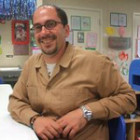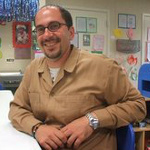 I’d like to correct a misconception that could hold back the much needed movement to empower male youth, and particularly boys and young men of color (BYMOC), toward more equitable outcomes. The idea is that before feminism catalyzed more gender-specific and gender-responsive spaces for females, youth serving schools and agencies were inherently designed to serve males’ needs.
I’d like to correct a misconception that could hold back the much needed movement to empower male youth, and particularly boys and young men of color (BYMOC), toward more equitable outcomes. The idea is that before feminism catalyzed more gender-specific and gender-responsive spaces for females, youth serving schools and agencies were inherently designed to serve males’ needs.
The field is still identifying the unique needs and particular challenges of boys and young men, and how to design gender and culturally responsive practices and policies to address obstacles. The danger of assuming things are “made for males” from the start is that we avoid deeper analysis and further action.
Examples of youth-serving institutions’ on-going struggle to become more responsive to males’ needs come from personal experience, as an ally within the BYMOC movement, and as founder and director of the Oakland based nonprofit Brothers on the Rise. Stories from my own Caucasian, middle-class, urban/suburban background may demonstrate that this issue affects all males, with the aim that cited strategies be considered across demographic and geographic delineations.
Like so many males as a boy growing into a man, I experienced different types of violence, which were all very scary and somewhat traumatizing. Some are stories still not easily told. Fortunately, by high school, this “difficult phase” had primarily passed. Unfortunately, male adolescence remains a treacherous path. It’s still hard and sometimes dangerous for male youth to express vulnerabilities, to open up about victimization and seek help. How have mental health systems successfully responded to this need, which is greatest for BYMOC, who are disproportionately affected by violence?
As a Licensed Clinical Social Worker, I can safely say we have a long road ahead. Think of the core question practitioners learn to ask clients: “How do you feel?” Although talk therapy remains the primary counseling modality, male youth often respond best to other forms of self-expression and healing, including culturally based ritual, music, art and movement. Similarly, although we know adolescents place a high value on the peer group, and one-on-one therapy can feel uncomfortable for males, the latter approach is still most prevalent in schools and agencies, in part because the financial reimbursement system more richly rewards individual sessions.
A similar analysis needs to take place within schools, as a typical academic day spent sitting, listening, reading and writing is not responsive enough to the hands-on and visual learning styles of many male youth. Younger boys are seen as “fidgety,” then “disruptive” and finally “defiant” when they question punishments. Subsequently, males, and particularly BYMOC, become disproportionately disciplined, referred to special education and diagnosed with ADHD, conduct and oppositional defiant disorders, and as they get older, are sent not only out of class but out of school.
We need more gender and culturally responsive curriculum and pedagogy, and a more diverse and culturally competent workforce. For this, school day administrators would be wise to look to the Out of School Time (OST) and youth development fields for best and promising practices. Alternative disciplinary policies and programs such as restorative justice must also continue to proliferate as they help keep males in school where we belong.
But let us not omit from this discussion the harsh and enraging realities of so many male youth of color, particularly those from African American and Latino communities, who are inequitably affected not just by expulsions and dropouts, and not just the exposure to violence and resulting post-traumatic stress disorder, depression and anxiety that often underlies the “damning” diagnoses listed above. When we consider the astonishing numbers of male youth of color who are incarcerated, injured or killed before they reach manhood, the need for immediate and ongoing action to address this crisis becomes clear.
Thankfully, from the grassroots to the nation’s highest office, mobilization is underway to support our “sons and brothers,” and there are many ways to contribute. Whether we empower through effective practice, engaging OST programming or equitable policies, all of us who work with male children and youth can and must do our part.
Jon Gilgoff, L.C.S.W. is the executive director of Brothers on the Rise, a nonprofit organization in Oakland. www.botr.org































